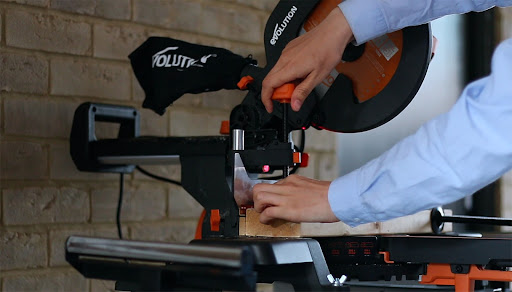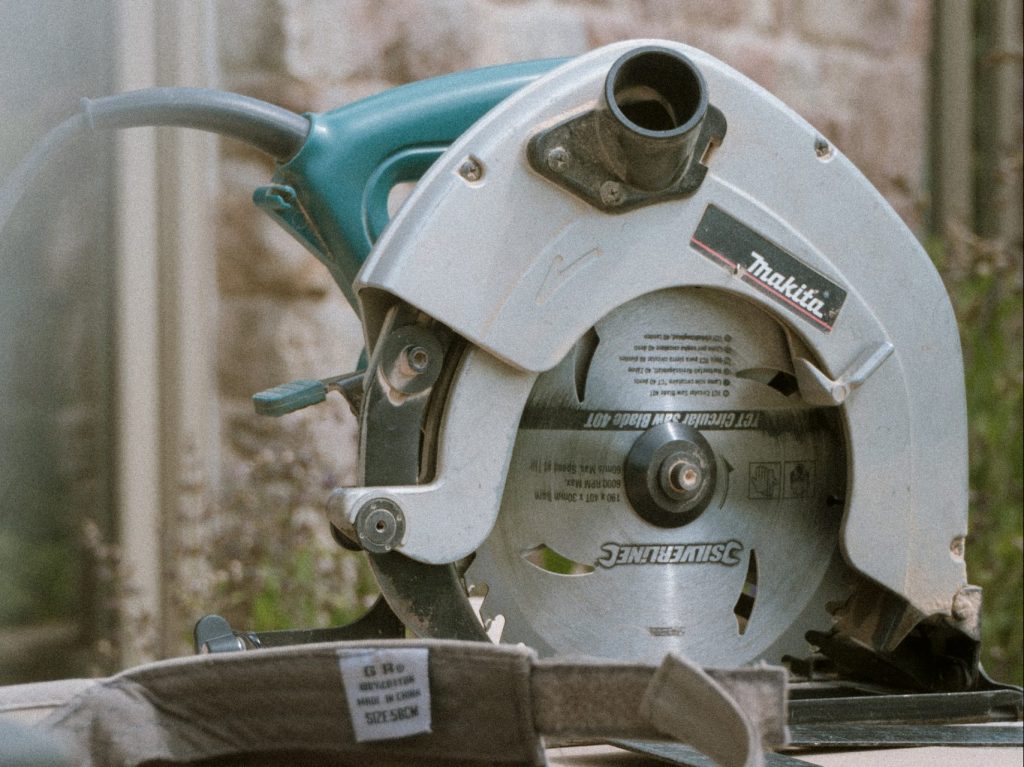It’s very common to experience a kickback on your circular saw every once in a while. However, it can be dangerous if not handled properly.
The good news is it’s controllable if you understand the cause and effect of the kickback.
To help you out we have mentioned everything you need to know about why you’re experiencing a kickback on your circular saw, and how to prevent it.
Quick Summary
In this post, we will cover the following points:
- What is a kickback?
- Why does my circular saw kickback?
- How to stop circular saw kickbacks?
So, without further ado, let’s get started.
What is a Kickback?
A kickback takes place when the circular saw blade binds or suddenly stops in the wood. As a result, the saw drives back towards you.
Therefore, it’s important you make sure that the saw blade doesn’t bind in the wood. It also takes place if you cut the wood on an irregular or unequal surface.
Another reason can be the type of wood.
What type of wood are you about to cut? Does it have any knots that may cause a kickback?
If you feel that the blade is about to bind, quickly let go of the trigger to stop the saw. We also suggest you use a fence or a guide to make long ripping cuts. Keeping both hands on the circular saw also helps, however, we will discuss this further in the article.
Why Does My Circular Saw Kickback?

There is no single reason as to why a circular saw may kickback. To prevent any accidents that might occur due to a kickback, let’s go over some of its causes.
Unsharpened Blade
The most common reason for a kickback is an unsharpened or dull blade. Dull blades need more pressure to cut material. This increases the chance of pinching.
As a result, the blade might get stuck to the wood and move backward.
Overused Saws
Excessive use of a saw can overhead the blade. A blade can also overheat due to an edgeless blade, extensive rubbing of the saw on the board, a saw that is incorrectly adjusted, or if you use the saw too abruptly.
All these factors cause greater friction in the blade, which may cause the saw blade to kick back.
Knotted Wood
If you’re an experienced carpenter, you would know it’s quite difficult to cut knotted wood. This is because some knots in the wood are deeper than others while others are looser.
There’s a chance your circular saw may get jammed or pinched if you try to cut these knots. Therefore, we recommend you choose the wood carefully. Look for wood that isn’t compressed or knotty to prevent kickbacks
Depth of the Saw Blade
When you adjust the depth of the blade, make sure that you do not choose more than the actual depth capacity of the blade.
Keep in mind that the depth shouldn’t be greater than the thickness of the stock. This is because the greater exposure of the wood may increase the possibility and harshness of the kickback.
Size of Workpiece
Lastly, the size of the workpiece also has a great impact. In some cases, a small workpiece may be more dangerous. This is because when the size is small and light, the saw might miss the wood as it strikes.
As a result, there might be a throw-off of the wood. Sometimes, the speed of the kickback is so fast that you might not even be able to catch it.
How to Stop Circular Saw Kickbacks?
For the most part, it’s about safety precautions and technical adjustments to avoid kickbacks.
Here are some proven ways to prevent them:
Saw Operation
Proper operation of the saw is the easiest and most convenient way to prevent kickbacks.
You might already know that the circular saw has two handles, the front, and the back. While you use the saw, make sure you have a tight hold on both these handles. Furthermore, hold the trigger handle. This way you’ll easily be able to throw the saw away in case of a kickback.
Correct Position
Most of the time, a kickback occurs in the opposite direction of the cuts. Therefore, it’s important that you uphold your position properly.
Do not stand directly behind the saw, instead, try to position yourself on the side.
Secure the Wood Piece
Before you start to cut the wood, make sure to fasten it properly in its place.
A good idea is to use grip clamps especially if you have a large piece of wood. However, the wood piece lies on the support so you can have full control.
Use Good Support for Work Piece
Another common reason why a circular saw may kickback is when you don’t use fine support between the longer piece of wood.
This may cause the wood to bend and pinch the blade. That’s why we recommend you place a pair of support on either side of the saw as well as the middle.
Examine the Circular Saw
This is the most important step. Examine your saw every time before use.
Check for the following things:
- Inspect the blades closely. If you find any bends if the teeth are not smooth, don’t use the blade
- Check if there are any irregularities in the body of the blade
- If you have to work slowly or abruptly on a project, make sure the saw blade is extremely sharp. Also, make sure you have a strong enough motor so the blade doesn’t overheat.
- Make appropriate adjustments to the blade depth capacity.
- Check if the blade is properly connected to the shaft of the circular saw
Stop immediately
If you hear any unusual noise from the circular saw, stop your work immediately. This is the time to go over the above checklist once again to see if anything is wrong.
Safety Measures
Lastly, the most effective way to prevent kickback is to wear your safety gear. This includes safety goggles, dust masks, gloves, protection shields, and toe boots.
It’s important to have all the tools on you before you start doing something.
Wrapping Things Up…
This brings us to the conclusion of this article. We hope you’ve gotten something out of all the information we presented.
Remember, most of these problems can be avoided if you thoroughly read the user manual and understand the machine.
If you’re a complete amateur, we would recommend you find someone to show you how to safely use the saw.
Check out how circular saw works on our page.

